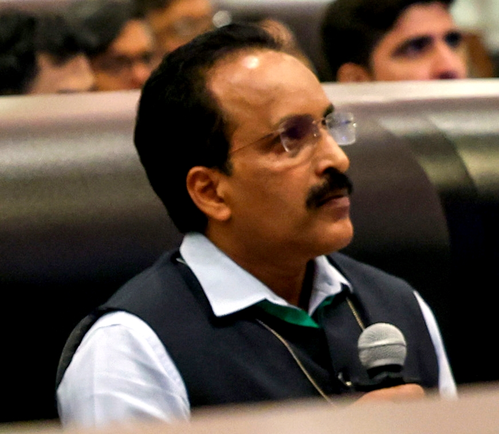Madurai: ISRO will conduct three more test vehicle missions under the ambitious Gaganyaan programme after the maiden TV-D1 test flight, which is scheduled October 21, the space agency’s chairman S Somanath has said.
The Gaganyaan project envisages a demonstration of the human spaceflight capability by launching a human crew to an orbit of 400 km and bringing them safely back to earth by landing in Indian sea waters.
The test vehicle development flight (TV-D1) will be conducted at the Satish Dhawan Space Centre in Sriharikota in Andhra Pradesh to test the crew module that is scheduled to house Indian astronauts during the human spaceflight late next year.
“The first test vehicle flight (of the Gaganyaan mission) will be conducted October 21. After that we have planned for three more test missions, D2, D3, D4. We will hold thorough tests during the test flight sequence,” Somanath, who is also the secretary, Department of Space, told reporters in Madurai Saturday. He was here to participate in a couple of events in Rameswaram.
TV-D1 involves launching the crew module to outer space, bringing it back to earth and recovering it after touchdown in the Bay of Bengal.
Recently, Union Science and Technology Minister Jitendra Singh said the Bengaluru-headquartered space agency would carry out the first of several test flights ahead of the Gaganyaan maiden mission October 21 at Sriharikota.
To a query about the Aditya-L1 programme, the maiden solar mission undertaken by ISRO, Somanath expressed hope that the spacecraft will reach the Lagrange point (L1) in the middle of January 2024.
“We will insert it in the L1 point and undertake various scientific experiments from that point,” he said.
Last week, ISRO scientists performed a trajectory correction manoeuvre on the Aditya L1 spacecraft. The spacecraft was launched by a PSLV-C57 rocket September 2.
On the setting up of another launch pad in Kulasekarapattinam in Tuticorin district, he said ISRO would be able to avail several benefits from that launch pad as it would be useful for launching smaller rockets and to serve private players.
“…right now bigger rockets like PSLV need to take a turn towards the southward direction above Sri Lanka since the launch pad is in the east (in Sriharikota). Whereas in Kulasekarapattinam, we don’t need to make rockets to make that turn as they will already be facing southward,” he said.
“Smaller Satellite Launch Vehicles and private players will be able to use that launch pad (in Kulasekarapattinam). Right now, the land is in the acquisition stage. It will take two years for completion,” Somanath said.
PTI
